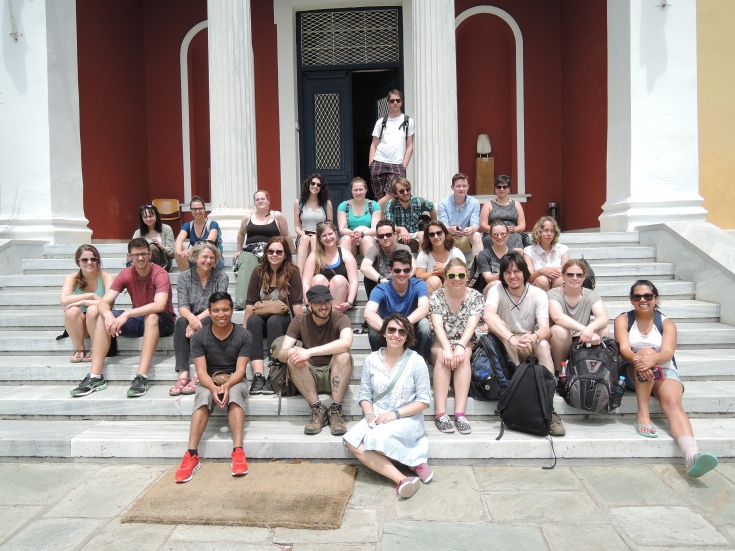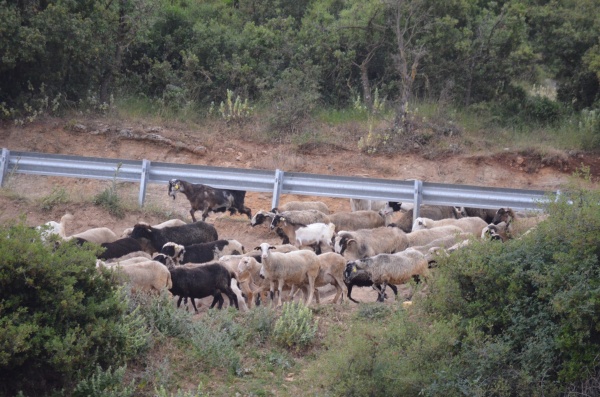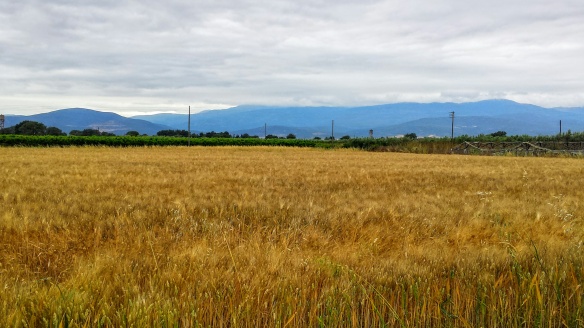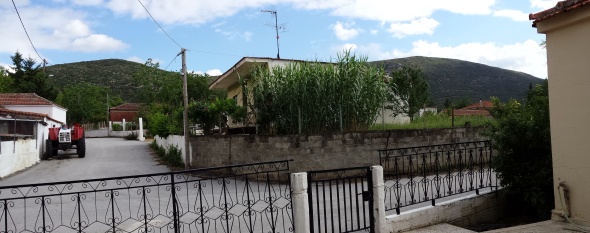Narthaki and its Landscape by Katherine Bishop
May 22, 2016…
Sunday, the day of rest and recovery, especially for the Narthaki people and their landscape. Just 24 hours prior this village was exposed to an incredible display of Mother Nature’s power as torrential downpour flooded fields and made currented rivers out of side streets. As we drove past evidence of the devastation today, it reminded me of how dependent communities like this are on the natural landscape and how quickly each aspect of the space can change. One of my favourite aspects of this place is how vivid the landscape is, and how incredibly grounded within Thessalian livelihood each aspect has become.
Driving throughout Thessaly I was initially struck by the glowing golden fields of wheat, straw, and barley, in their varying stages of growth and development. The barley grown near Narthaki is specifically used to make Amstel, a delicious beer that is proudly sold throughout the village at the Tavernas and Ouzerie. Such a product can socially connect members of the public and serve as a source of revenue for local farmers. Wheat and straw, alternatively, are often used as a fodder for animals. Domesticates are very important for everyday life. Walking past each family homestead one can find a cluster of hens kept for a daily supply of eggs, and a sheep or goat that are kept for milk. Walking through elevated parts of the community yields homesteads that have larger storage vessels for a larger supply of milk and cheese processing. During siesta the walk through this portion of the community will also expose you to the sound of bells and blehying, as shepherds move with their large herds of sheep and goats in pastured areas among the hills.
It is difficult for me to describe the mountains across Thessaly, glowing green under the Greek sun or shrouded in blue with passing clouds. Having grown up in a landscape among the relatively flat region of the Great Lakes in Ontario, I find myself at peace around the vast array of mountainous terrain and almost awe-struck by its serenity and genuine grandeur. I feel that I can never quite get the right picture to display how awesome they feel to me. Such a terrain is also essential for large herds of sheep and goats as they provide accessible terrain for grazing for the animals which would otherwise be unsuitable for agriculture or habitation. As we sort through the archaeological materials found nearby I also catch myself thinking about how such a terrain would have impacted ancient peoples, their livestock, and how this likely interplayed with economy in antiquity. How would this landscape have been impacted by its people hundreds and thousands of years ago?
Humans often believe that we domesticated and developed our landscapes to suit our needs, but the terrain, climate, and natural spaces also impact how we live within our respective spaces. Nestled below the mountains, amongst small family vegetable gardens, larger barley fields and accessible by curved streets lies Narthaki: a beautiful place within the Thessaly landscape that I am beginning to consider home.





